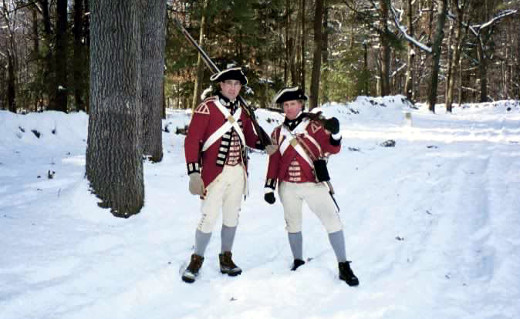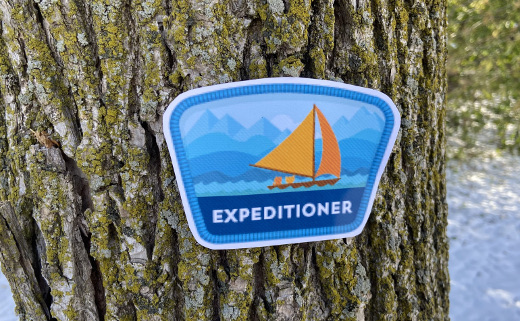Shutterfly Serendipity and Solicitude

Back in November 2022 I got an email from photo products company Shutterfly that starting in the new year customers were required to place orders every 18 months in order to store photos on their platform. Not knowing what I had stored with the service, I logged in found a couple of dozen photos from over the years. I downloaded them and then deleted my long-inactive account.
In the process of doing so, I found I had another Shutterfly account, one tied to an email address I wasn’t even using anymore. Upon dusting off that email and logging into that account, I found I had a few more images stored there – 3,283 to be exact. Yes, over three-thousand images I had clearly forgotten about. After some intense eyebrow-knitting, I remembered why they were there: in 2011 film processing service PhotoWorks.com shut down and allowed all images stored online to be transferred to Shutterfly, which I apparently did. And there they were for all these years.
What the Film?
Prior to the almost-purely digital age of photography we live in, there were film cameras. In the 1990’s I learned about a company called Seattle FilmWorks, where you could mail in your film for processing and get back paper prints, your negatives and a floppy disk with digital images of your photos. This was a game-changer for me, and I became a loyal customer. Over time they rebranded to PhotoWorks.com, and eventually shut down. But by that time, I was already using a digital camera and eventually my mobile device for photography.
The digital images provided by Seattle FilmWorks were in a proprietary format that could only be viewed and extracted into a non-proprietary format with software they provided. Over time I did this for many of the images, but not all, and I still have the digital files archived from those original floppy disks. That being said, the resolution of the original images was rather small; on average an image was only 768 x 512 pixels, where today an average image from my iPhone is at least 5 times that size.
Nonetheless I downloaded all of the images from Shutterfly and deleted that second account. As one my guess, the process of downloading over 3,000 of anything is a workload, and this was no different. On top of it, all of the images were in one giant folder and not organized by their corresponding roll of film as they likely were at PhotoWorks. For backup purposes I wanted them all, though eventually I will likely digitize the negatives to more modern dimensions. The accompanying picture with this post is one of those pictures – taken years ago along the trail between Lexington and Concord, Massachusetts where my then-girlfriend (now wife) and I came by a couple of American Revolution re-enactors. Our pleas to them to not shoot us didn’t humor them, but they did pose for this picture.
Where the fancy word for concern comes in
As I mentioned, I deleted both accounts with Shutterfly. Nothing personal to them, but I can’t recall a time when I ever ordered from them – there was no order history in either account. If I ever want to in the future, I am sure I can create a new account. This maintenance was part of managing my external digital presence, or footprint as it is often called.
Over time I review the massive list of accounts I have with online services. If it’s a service I use often, I will periodically reset the password. If it’s one I don’t use at all, I will try to delete it – I say try as some services don’t give the option. Sometimes when I try to login to an account, the service is gone altogether, and then I just strike it from my list. This periodic maintenance is necessary, but something I am not as diligent with as I would like to be, not to mention something most people don’t do at all. Where this doesn’t keep me up at night, it is something I am concerned about.
So what else of mine is out there, waiting for me to reclaim it? What else of yours is out there too?
This is from The Hot Iron, a journal on business and technology by Mike Maddaloni.
Did you enjoy this? Subscribe to The Hot Iron by RSS/XML feed or Read by Email
Strategize • Technology • (0) Comments • PermalinkMy Takeaways From Baby Steps Millionaire
Money. The mere mention of the word can evoke all kinds of thoughts and emotions. From joy to concern to comfort to panic to, oh crap, did I pay the electric bill this month?
Most all of us have money in some way, shape or form and the opportunity to do most all we want with it. But could you be a millionaire? I am sure some reading this are, some don’t care, some see no way and maybe some have no idea if they are or not. From game shows to lottery tickets to Austin Powers movies, the milestone of being a millionaire has been one known throughout the world.
But back to the question – could you be a millionaire? Dave Ramsey thinks you can. The long-time radio and TV host of personal finance programming and author has been professing common sense regarding money and finance for decades. Where I have been aware of him and seen and heard his shows on occasion, I have never really dove into what he professes. When I heard of his recent book Baby Steps Millionaire, I was intrigued and picked up a copy.
Baby Steps Millionaire tells the tales of people who became millionaires – they have a net worth of or over one million US dollars and how they achieved it. As I read through the book, a few takeaways formed in my mind.
People and how they did it – Where I am not trying to spoil the book for you if you are equally intrigued to read it, it may not come as a surprise for the majority of them there was no “fast path” and it involved sound spending and investing over time. There are many stories that are somewhat similar in context in how people reigned in spending, cut expenses and made lifestyle choices and saved even when they didn’t think they could. These stories make up the first half of the book, and though after a while they become a little repetitive, Ramsey is merely driving home the point on how you can be a millionaire too.
Survey says – The second half of this book is the results of a survey of millionaires, and builds and heightens the first half with more concrete data. It starts out going into rather detail about how the survey was developed and conducted (maybe all surveys do this, I don’t read many surveys in this kind of detail) and then shows the results of what millionaires say about how they got to where they are. Sure, a few inherited their millions from the infamous long-lost uncle, but many followed the sound money steps that were driven home in the first part of the book to get to where they are.
Off-site storage – Dave Ramsey’s first baby step to financial stability is one I have known for years in setting up an emergency fund with $1,000. If you get into a bind, it’s the thing you break the figurative glass of and tap into, then work to replenish it. Though we have savings accounts of different ilk, my family did not have a specific emergency fund, and now we do. But $1,000? Today?! A small amount comes out of each of my wife and I’s paychecks and goes into the account that is at a bank that isn’t our primary and one we have to make an effort to get to. It’s a good feeling to finally have this.
Baby Steps Millionaire is a good read that I recommend as a friendly reminder of how you can achieve financial goals, whether you want to be a millionaire or not. Where some of it can be repetitive, it is a positive book that shows many examples of how people got onto a financial track and took off. As I give away all books I read, I am giving this one to someone who is getting back on track in many ways, and I hope it gives them inspiration when it comes to the M word.
This is from The Hot Iron, a journal on business and technology by Mike Maddaloni.
Did you enjoy this? Subscribe to The Hot Iron by RSS/XML feed or Read by Email
Book Take-Aways • (0) Comments • PermalinkCelebrating 16 Years Of The Hot Iron Partially with AI

Congratulations to Mike Maddaloni on 16 years of successful blogging at The Hot Iron. It is a notable achievement to consistently produce high-quality content for such a long period of time.
Note that the preceding 2 sentences were not written by me, or any human being for that matter. It was generated by the artificial intelligence (AI) chatbot ChatGPT. Not bad, eh? That being said, it took some effort to generate it and put this post together.
Why AI?
Over the last few months I have been hearing more about ChatGPT and how with a query or feeding of information to it will give a reasonably understandable response. Intrigued by this, I created an account with the platform (note you need to provide an email address and a phone number to verify yourself) and gave it a try. The 2 lines above were generated as a result of the following query:
“Congratulations to Mike Maddaloni in the third person on 16 years of blogging at The Hot Iron in 2 sentences”
The query was tweaked several times, the final one here worked for this piece after I added “in the third person” as previous attempts consistently used the first person, likely as it was trying to “chat” with me rather than generate a statement to be used here. Also in previous tries it added a third statement of “well done!” at the end every time until I added the third person language even though I explicitly stated I wanted only 2 sentences.
Once I was satisfied with the text, I thought why not accompany it with an AI-generated image? After trying several AI art generators I found from search engine queries, I gave up. Trying requests with variations on “number 16” did not give me an image that had the words or numerals in it, so I went outside and took a picture of my house number, brought it into GIMP and messed with its filters to create what is appearing above.
A good first try with AI generated content; good but not great. Will future posts here contain more AI-generated content? Possibly, as I am just beginning to explore this area. If there is, I will certainly disclaim it.
Happy New Year!
This is from The Hot Iron, a journal on business and technology by Mike Maddaloni.
Did you enjoy this? Subscribe to The Hot Iron by RSS/XML feed or Read by Email
Announcements • Technology • (0) Comments • PermalinkMerry Christmas 2022

Merry Christmas to my friends, family, readers and anyone else who happens to read this!
When I was thinking of what photo to accompany my greeting, I could have easily taken one of the blowing snow amidst the subzero temperatures that has consumed the upper Midwest this week, but the scene above caught my eye the other day. This is the façade of the former Hollister store at the local mall that has remained long after the store moved to a more modern-looking space. With the weather outside as frightful as it is, there was something about the faux California beach scene decorated for the holidays that made me smile.
Whether you celebrate the holiday in any way shape or form, or not, may your day be as full of happiness as possible.
This is from The Hot Iron, a journal on business and technology by Mike Maddaloni.
Did you enjoy this? Subscribe to The Hot Iron by RSS/XML feed or Read by Email
Announcements • (0) Comments • Permalink2 Ways I Use Salesforce Trailhead
When the organization I work for began talking about using Salesforce, my first inclination was to try to get ahead of the game and learn something about the global giant in cloud-hosted business applications. Where I had some familiarity with the platform from the past, my knowledge was far from current and I wanted to be able to at least be able to converse about the platform at a basic level.
As I explored how to learn Salesforce, I was quickly directed to Trailhead a platform in itself for learning the product. Trailhead uses gamification, a process to deliver learning while making it fun and awarding digital tokens or badges along the way, - and microlearning, a method of taking complex information and breaking it down into smaller components for ease of learning and retention, to help make sense of the vast landscape that is Salesforce. If gamification and microlearning are new terms to you, click on the links above for great overviews of them from my friends at Evolve Solutions Group.
Trailhead is available to anyone for free – yes, free. Not only does it remove the barrier to entry on learning Salesforce but it serves as a great marketing tool for it to boot.
Thus my learning journey began. Trailhead offers various modules that present a topic in multiple units. At the end of each unit is a short quiz where you can earn points. Upon passing all of the unit quizzes you earn a badge for the module. Groupings of modules around a topic area are called a trail. There’s also projects where you can develop applications in a Salesforce sandbox site, which is also free. There are also trailmixes which are user-generated groupings of modules that are created by Salesforce staff as well as fellow learners. The more badges and points you earn qualify you for various ranks – as shown above, I am an Expeditioner as I have earned over 50 badges and 35,000 points.
Modules offered on Trailhead begin with learning how to best use Trailhead itself, and then go from high-level to detailed on the overall Salesforce platform and its components. There are also modules on softer skills, including project management, leadership and other topics such as Accessibility. Where there is also a Salesforce connection to what is presented, anyone can learn or be refreshed on a variety of business skills on Trailhead.
As I completed modules and projects and earned points and badges, I realizes the 2 major benefits to using Trailhead.
Learning product capabilities – Where I may not end up being a Salesforce developer, I will definitely leading products and applications built on the platform. Over my career I have found understanding the code and how an application is developed as an advantage to best leveraging the capabilities of any technology. For example, I will be working with Salesforce’s Experience Cloud, a product where a customer portal can be developed and managed. Knowing what you can do with it, how you can do it and in the case of Experience Cloud how user licenses are managed has been beneficial to me and my team in how we can best leverage it. Outside of Experience Cloud I have learned how it fits into the overall Salesforce ecosystem.
Killing time – This is something I did not see coming, where I am using Trailhead when I have a little time to spare. Yes, Trailhead in some regards has replaced Solitaire as a simple prop to occupy my time! Whether I have spare minutes while waiting for my kiddos sports practices to finish or just want a good yet productive diversion in the workday, Trailhead has been beneficial in that regard. Plus it has allowed me to explore other modules and trails and their related Salesforce products I may not have otherwise known about. It’s time better spent than trying to stack virtual playing cards in order.
In addition to this usage, a nice feature of the Trailhead platform is connecting with others, similar to how you can in LinkedIn or other social media platforms. Click here to view my Trailhead profile and I welcome you to connect with me.
Deconstructing Trailhead
No matter your field, keeping your skills sharp is imperative, especially in this global remote working economy. Where Salesforce has the dominant position in the cloud business application market and can as a result dictate how people use and are educated on its platform, they have chosen a unique approach to learning. Much time and investment goes into something like this, but I feel this is money well spent and my guess is that Salesforce does as well. Not only am I learning what I can do on the platform, but I am learning apps and functionality that need to be licensed which directly impact the revenue of Salesforce. More vendors and companies can learn from this approach of leveraging microlearning and gamification to their advantage.
This is from The Hot Iron, a journal on business and technology by Mike Maddaloni.
Did you enjoy this? Subscribe to The Hot Iron by RSS/XML feed or Read by Email
(2) Comments • Permalink


